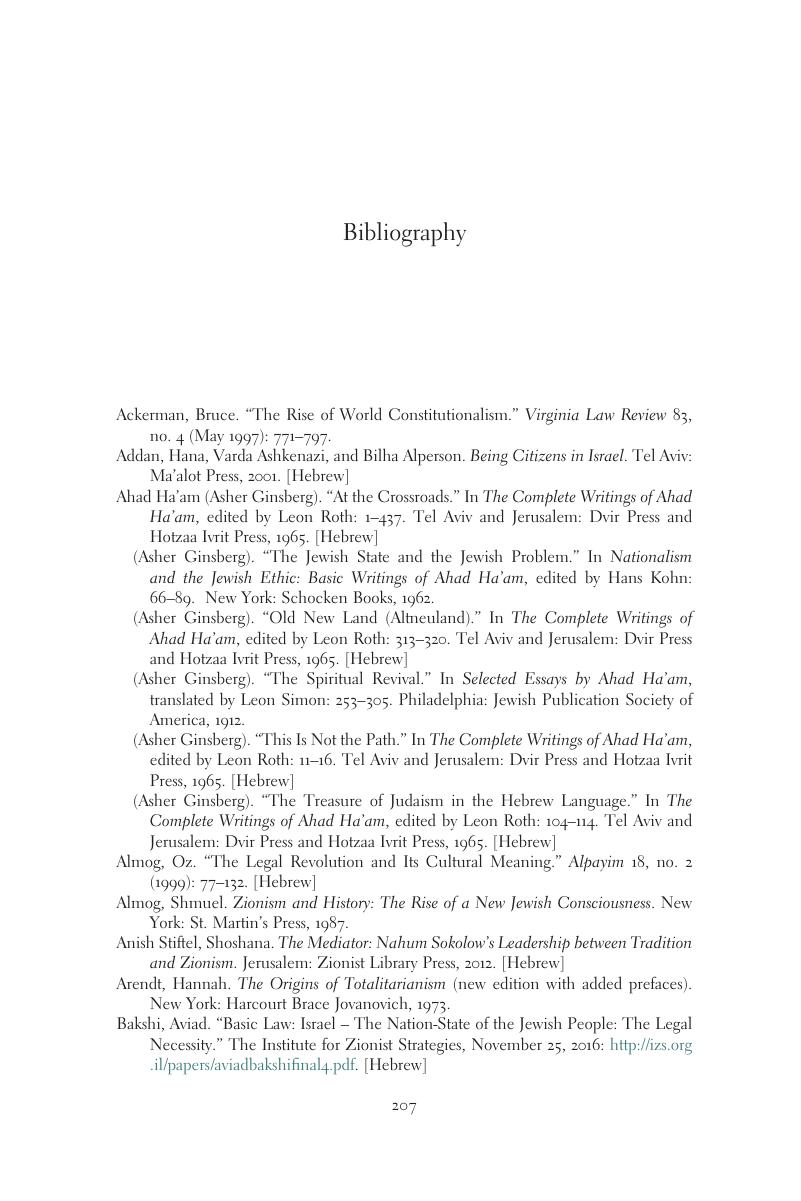Book contents
- Law and Identity in Israel
- Cambridge Studies in Law and Judaism
- Law and Identity in Israel
- Copyright page
- Dedication
- Contents
- Introduction
- Part I Seeking to Fashion National Law
- Part II The Resurgence of Cultural Conflict
- Part III Zionism, Democracy, Law, and Culture
- Conclusion
- List of Legal Cases
- Legislation
- Bibliography
- Index
- References
Bibliography
Published online by Cambridge University Press: 24 October 2019
- Law and Identity in Israel
- Cambridge Studies in Law and Judaism
- Law and Identity in Israel
- Copyright page
- Dedication
- Contents
- Introduction
- Part I Seeking to Fashion National Law
- Part II The Resurgence of Cultural Conflict
- Part III Zionism, Democracy, Law, and Culture
- Conclusion
- List of Legal Cases
- Legislation
- Bibliography
- Index
- References
Summary

- Type
- Chapter
- Information
- Law and Identity in IsraelA Century of Debate, pp. 207 - 222Publisher: Cambridge University PressPrint publication year: 2019



